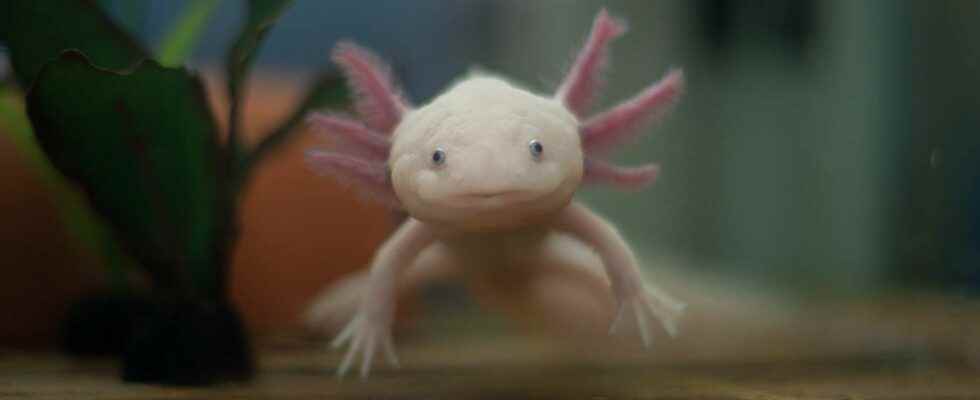The axolotl. You know ? It really is an amazing animal. For various reasons. But perhaps above all because it seems to hold the secret of eternal youth. To better understand it, researchers dived into its brain and discovered incredible regenerative abilities.
You will also be interested
[EN VIDÉO] This decapitated sea slug can regenerate its entire body These species of sea slugs have an amazing ability to regrow their bodies. Even organs such as the heart can be regenerated! © Sayaka Mitoh
The axolotl is a funny animal straight from Mexico. A kind of salamander with gills like feathers that spring from its head. Webbed feet. And a Mona Lisa smile screwed on his face. A kind of salamander that seems above all to hold the secret of eternal youth. Because she keeps her youthful characteristics all her life. But also because the axolotl is able to regenerate organs damaged by a accident of route. A member, a eye. Or even a part of her brain. Researchers have known this since the 1960s.
Today, thanks to sequencing of the’RNA single cells, researchers at the Swiss Federal Institute of Technology Zurich (ETH, Switzerland) explored the telencephalon of the axolotl. Why ? Because it’s the biggest division of his brain. The one that contains the neocortex which plays, in humans, a major role in the behavior and cognitionthinking and spatial reasoning.
The researchers also hoped that studying the forebrain of the axolotl would help them better understand how the brain evolved in animals. Because over time, the cells that make up the telencephalon have greatly diversified and become more complex. The neocortex has taken on an increasingly important role.
Snack time! Hanging out with the axolotls this weekend and they are just as adorable as usual. ???? pic.twitter.com/UuAMl1sxla
— ????????. ??????????????????????????????? ????????????????????????? ≽(◕ ᴗ ◕)≼ ???????? (@RogersLabUCD) September 3, 2022
Regeneration accessible to humans?
What the ETH researchers observed is that all types of damaged cells in the forebrain of the axolotl can be completely regenerated. In a first phase, the number of progenitor cells — those capable of multiplying or transforming into others — increases sharply. And some of these cells activate the process of healing. In a second phase, the progenitor cells differentiate into neuroblasts. Neuroblasts which, in a third and final phase, differentiate themselves into the types of brain cells which were initially damaged.
Even more surprisingly, the severed neuronal connections have also been regenerated, allowing the reconstituted area to fully regain its original function.
By comparing their data on the axolotl with those already available for other animal species, the ETH researchers noticed that its telencephalon strongly resembles the cortex olfactory and to the hippocampus — the region of the brain involved in memory formation — mammals. They even noted similarities in one cell type of the axolotl with the neocortex of the latter. Enough to imagine that these areas of the brain can be preserved during evolution.
However, several questions remain unanswered. Like the signals that trigger the regeneration process. Or again, that of the accessibility of this process to more evolved animals. Accessibility that could open up the gate to new treatments for brain damage serious in humans.
Interested in what you just read?
